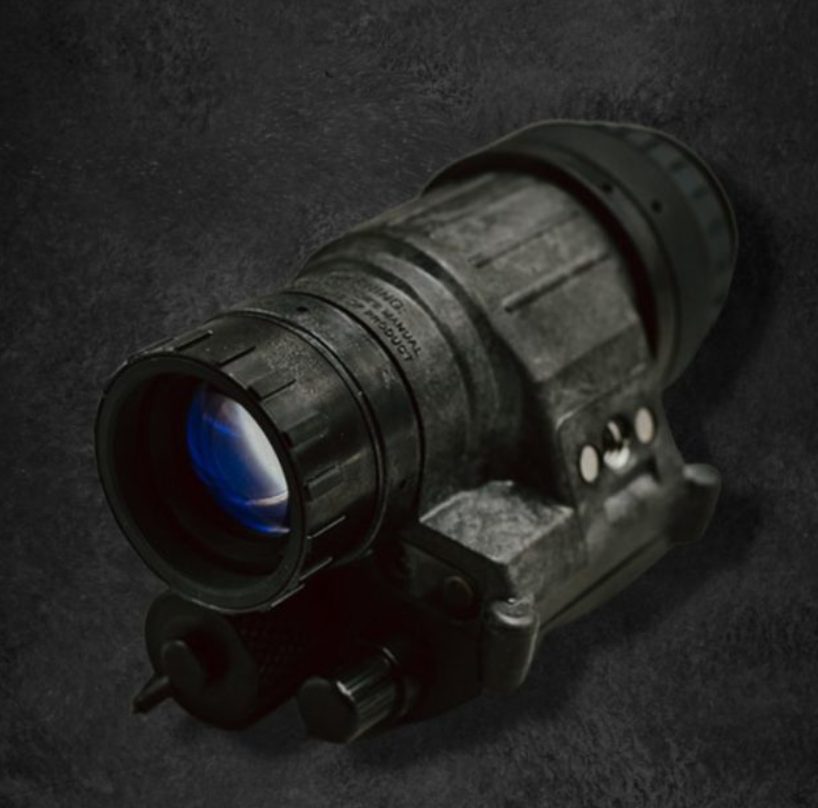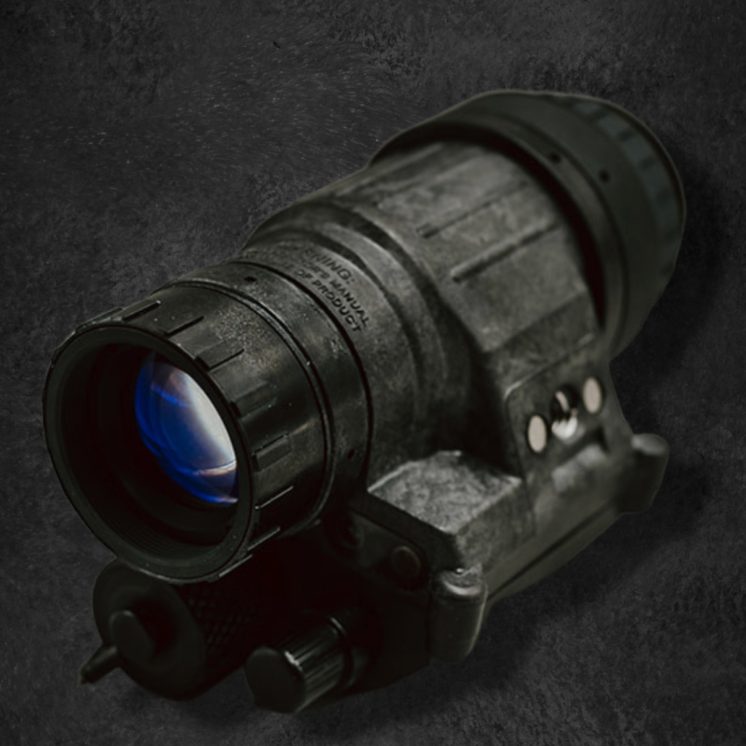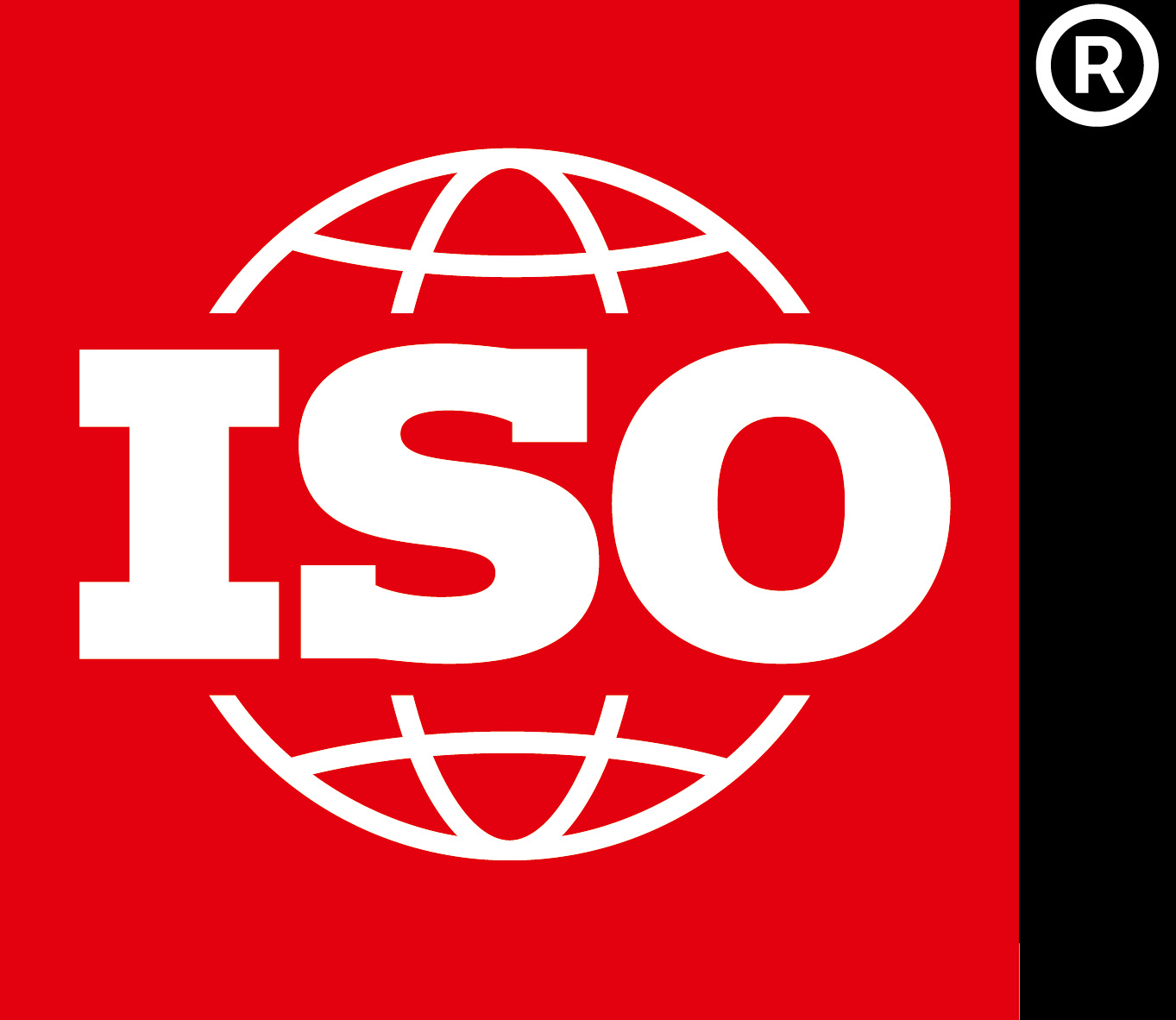Night vision technology has become increasingly important over the past few decades. It has enabled us to see in the dark and has been used for a variety of applications such as surveillance and navigation.
This article provides an overview of night vision technology, from its history to its current uses and potential future developments.
→ Night vision is achieved through the use of devices that amplify ambient light or other sources of illumination, allowing us to see in very low light or even complete darkness.
→ This article examines the different types of night vision technology available today, their advantages and disadvantages, and potential applications for the future. We’ll also explore some of the ethical considerations that come with using this type of technology. By Steele Industries!
→ Take the time to read our different articles!
–NIGHT VISION HELMET MOUNT STANDARDS: A GUIDE
–TROUBLESHOOTING YOUR NIGHT VISION DEVICE
–NIGHT VISION MYTHS VS. REALITY: DEMYSTIFYING THE HOLLYWOOD HOOPLA
–HUNTING WITH A NIGHT VISION DEVICE: YOUR QUESTIONS, ANSWERED
–NIGHT VISION COMPATIBILITY WITH RED DOT SIGHTS
-And more, visit our blog!
Contact:
-Call us at (800) 674-7302
-E-mail: sales@steeleindinc.com
–Facebook/ steeleindustriesinc
–Instagram/steeleindustriesinc
History Of Night Vision Technology

Night vision technology has been around for a long time. The earliest examples of night vision technology were used during World War II when devices such as the starlight scope and the snooper scope were used by military personnel.
Since then, night vision technology has improved significantly, with modern systems providing high-resolution images in low-light conditions.
Today, night vision technology is used for a variety of applications, ranging from surveillance to navigation. It’s become an invaluable tool for military personnel, law enforcement officers, security guards, and other professionals who need to see clearly in the dark.
Advances in technology have made these systems more affordable and accessible than ever before, making them ideal for use in both commercial and consumer applications.
With its broad range of uses and its ability to provide clear visuals even in near darkness, it’s easy to see why night vision technology remains an important tool today.
Types Of Night Vision Devices
⇒ Night vision technology offers a range of devices to suit varying needs.
The most common night vision device is the image intensifier tube, which uses a photocathode to amplify existing light or infrared radiation. This type of device can be used for surveillance and hunting, as it produces a green image that is easier to see in low-light conditions. It also has a high degree of sensitivity and can detect objects within its field of view even when there is no visible light present.
Another type of night vision device is thermal imaging, which works by detecting infrared radiation emitted from an object. This makes it ideal for hunting and search and rescue operations, as it can detect the heat signature of animals or persons even in complete darkness. Thermal imaging also has the advantage of being able to penetrate smoke and fog more easily than traditional night vision systems.
How Night Vision Works
Night vision technology is an amazing tool that allows us to see in the dark. Understanding how it works is essential for anyone looking to use it effectively.
Now that we’ve discussed the different types of night vision devices, let’s look at how they work.
At its core, night vision depends on the ability of a device to gather the small amounts of light present in low-light environments, amplify it, and then display an image that humans can interpret.
This process begins with the lens, which collects what little light there is and directs it into a tube filled with phosphors and photocathodes. The photons from this light are converted into electrons that are amplified by up to 40 000 times. These electrons then hit a phosphor screen producing a greenish image that our eyes can interpret.
This image is then further processed by digital electronics to obtain better resolution and contrast.
Using these components together allows us to see far beyond what our eyes can normally detect in low-light conditions. With night vision devices becoming increasingly more sophisticated, their capabilities continue to expand as well – giving us access to parts of the world we would otherwise not be able to explore at night.
Advantages Of Night Vision
Night vision technology has become an integral part of military operations, allowing personnel to see in the dark and complete missions with greater accuracy and safety. Its advantages are far-reaching, making it invaluable for both civilian and military applications.
The increased visibility provided by night vision devices allows individuals to explore environments with far less risk than ever before, enabling them to conduct operations in hostile environments without putting themselves at risk. Night vision goggles also provide improved situational awareness, allowing users to observe their surroundings without being seen themselves. Additionally, night vision can help reduce fatigue during long-term operations as there is no need for additional lighting sources.
The use of night vision technology also provides enhanced mobility and versatility when conducting activities in low-light conditions. This allows users to move quickly and quietly through terrain that would be difficult or impossible to traverse under normal circumstances. Moreover, the ability to detect infrared radiation makes it possible for users to identify targets from a great distance away without being detected themselves. This ability can be key in avoiding detection or ambush while still providing a clear view of the target area.
By leveraging the advantages of night vision technology, individuals have an unparalleled level of security and situational awareness when operating in challenging environments.
Uses Of Night Vision Technology
The advantages of night vision technology are valuable and clear. Through the use of image intensification, thermal imaging, and active illumination, this technology enables us to see even in low-light environments. With this improved vision for a variety of applications comes a wide range of uses for night vision technology.
From military operations to home security systems, night vision technology provides an array of benefits. In the military, it’s used for reconnaissance missions where greater awareness in low-light settings is essential. Military personnel has been using night vision goggles since World War II to detect threats more quickly and accurately.
In addition, law enforcement officers also rely on this technology during search-and-rescue operations and surveillance tasks. Homeowners can also take advantage of this technology by using it in their home security system. This allows them to monitor their property more effectively at night and be alerted when there is suspicious activity on their property.
Furthermore, many hunters use night vision devices to spot animals in the dark or to see obstacles or paths in low-light conditions while they are hunting or hiking outdoors. Night vision has even become popular among stargazers who want to get a better view of the stars at night with minimal light pollution interference.
What are the different night vision offered by Steele Industries?
1) MONOCULARS
⇒ PVS-14 Photonis Gen 2+ White Phosphor

Description:
Our SI/PVS-14 is equipped with new production Photonis generation 2+ image intensifier tubes. Prices for the Photonis White Phosphor start at $2799.98. The image intensifier is a popular choice for this monocular due to its budget-friendly entry point.
The PVS-14 is powered by a single AA battery and offers a 40-degree field of view (FOV), which is the same as you’d get with a goggle setup. Although it’s often thought that the PVS-14 causes depth perception issues, that isn’t the case. You simply have one eye that can see through the device and one that can’t, which sends mixed signals to the brain until you become accustomed to using it. It’s important to practice with night vision devices before attempting to run with them. We recommend seeking training solutions from qualified instructors in your area.
We offer a FREEHAND SELECTION option for all customers. If you’d like to be involved in the assembly process, which we strongly encourage, please include the minimum specs you’re looking for in your order notes. Alternatively, if you’d like to be called when your order is in the build queue, write “hand selects” in your order notes and we’ll call you for FREE to help you choose your image intensifier.
-Dimensions: 4.5″ x 2.0″ x 2.25″
-Weight: 12.4 oz.
-Finish: Matte Black
-Power: One (1) standard AA battery
-Battery Life: Approximately 50 hours at room temperature
-Waterproof: Submersible up to 60′ for 2 hours
-Warranty: 10-year warranty & limited lifetime service
-GATE: Auto
-GAIN: Adjustable/variable
-FOV: 40º
-Objective Lens: F/1.2
-Ocular Lens EFL: 26mm
-Diopter: +2 to -6
-Focus: 10″ to infinity
-Basic Kit: SI/PVS-14, SI/Lens Pen, Warranty Registration, Quality Check Report, Hoffman -Report, Hardcase, Factory Spec Sheet
⇒ PVS-14 Elbit Gen 3 Thin Filmed White Phosphor

Description:
Our SI/PVS-14 features new production Elbit generation 3 image intensifier tubes. The Elbit White Phosphor is priced starting at $3499.98. This image intensifier is a popular choice for this monocular due to its budget-friendly entry point.
The PVS-14 is powered by a single AA battery and offers a 40-degree field of view (FOV), which is the same as you’d get with a goggle setup. While some believe that the PVS-14 can cause depth perception issues, this isn’t the case. The device simply allows one eye to see through it while the other eye does not, sending mixed signals to the brain until you become accustomed to using it. It’s essential to practice with night vision devices before attempting to run with them. We recommend seeking training solutions from qualified instructors in your area.
We offer a FREEHAND SELECTION option for all customers. If you’d like to be involved in the assembly process, which we strongly encourage, please include the minimum specs you’re looking for in your order notes. Alternatively, if you’d like to be called when your order is in the build queue, write “hand selects” in your order notes and we’ll call you for FREE to help you choose your image intensifier.
-Dimensions: 4.5″ x 2.0″ x 2.25″
-Weight: 12.4 oz.
-Finish: Matte Black
-Power: One (1) standard AA battery
-Battery Life: Approximately 50 hours at room temperature
-Waterproof: Submersible up to 60′ for 2 hours
-Warranty: 10-year warranty & limited lifetime service
-GATE: Auto
-GAIN: Adjustable/variable
-FOV: 40º
-Objective Lens: F/1.2
-Ocular Lens EFL: 26mm
-Diopter: +2 to -6
-Focus: 10″ to infinity
-Basic Kit: SI/PVS-14, SI/Lens Pen, Warranty Registration, Quality Check Report, Hoffman -Report, Hardcase, Factory Spec Sheet
→ Other products are available here! (https://steeleindustries.com/products/monoculars/)
2) BINOS / GOGGLES
⇒ PVS-31A L3 2376+ FOM WHITE PHOSPHOR

Description:
The AN/PVS-31A BNVD is a compact, lightweight Gen III dual-tube goggle that features enhanced white phosphor tube technology, providing better target detection and recognition. Nighttime and low-light maneuvers appear more natural in black and white, with improved contrast and detail in shapes and shadows, giving the operator more visual information for assessment and acquisition. White phosphor offers varying shades of intensity between black and white (compared to black and green), resulting in superior contrast and depth perception. This device has a low-profile ergonomic design and provides enhanced situational awareness compared to a single-tube goggles.
Developed with input from SOF operators, the BNVD aims to increase system resolution, significantly reduce head-borne weight, improve the system’s center of gravity, provide additional operational utility, and enhance overall situational awareness compared to currently fielded dual-tube goggles. The white phosphor BNVD is the successor to our battle-tested AN/PVS-15 and AN/PVS-31 standard green phosphor night vision goggles.
-Dimensions: 4.2″ x 4.2″ x 3.4″
-Weight: 0.99 lbs (with battery)
-Finish: Corrosion-resistant matte black
-Power Source: (1) AA battery (on-board) or 4 AA batteries (remote)
-Battery Life: >15 hours (single battery) or >50 hours (4 batteries)
-Waterproof: Submersible up to 66′ for 2 hours
⇒ Act In Black DTNVS – Dual Tube Night Vision Goggle

Our SI/DTNVS features new production image intensifier tubes from Elbit Systems of America, L3Harris generation 3, and now Photonis Imaging Tubes. The Elbit White Phosphor model starts at $8599.98, making it a popular choice for this binocular due to its budget-friendly entry point. We also offer L3Harris image intensifiers at $10,399.98.
IPD stops are not included and must be purchased separately
The DTNVS is powered by a single CR123 battery. It doesn’t come with a factory-installed LEMO port like the RNVG, but you can purchase a DICC from Jag Consulting to replace the battery compartment, enabling compatibility with battery packs like the AB Night Vision Inc Ground Optimized Battery Pack. The DTNVS also features auto on/off functionality and articulation, allowing you to stow it against your head for better weight distribution and fold individual sides up to use your rifle’s optic. With the addition of retention points and an optional IP stop, the DTNVS offers significant improvements over its predecessor, the DTNVG.
We offer a FREEHAND SELECTION option for all customers. If you’d like to be involved in the assembly process, which we strongly encourage, please include the minimum specs you’re looking for in your order notes. Alternatively, if you’d like to be called when your order is in the build queue, write “hand selects” in your order notes and we’ll call you for FREE to help you choose your image intensifier.
-Dimensions: 3″ x 4.13″ x 4.37″
-Weight: 17.9 oz.
-Finish: Matte Black
-Power: One (1) CR123 3V battery
-Battery Life: Approximately 25 hours at room temperature
-Warranty: 10-year warranty & limited lifetime service
-GATE: Auto
-GAIN: Automatic Gain Control
-FOV: 40º
-Objective Lens: F/1.2
-Diopter: +2 to -6
-Focus: 10″ to infinity
-Basic Kit: SI/DTNVS, SI/Lens Pen, Warranty Registration, Quality Check Report, Hardcase, -Factory Spec Sheet
→ Other products are available here! (https://steeleindustries.com/products/binos/)
If you wish to see more products I advise you to consult our website or to visit our different categories
–https://steeleindustries.com/products/ready-to-ship-nv/
-https://steeleindustries.com/products/night-vision-mounts-accessories/
–https://steeleindustries.com/products/night-vision-components/
-And more!
Conclusion
In conclusion, night vision technology has come a long way since its inception during World War II. Today, Steele Industries offers a comprehensive range of cutting-edge night vision devices that cater to various needs and applications, such as monoculars and binocular goggles. These devices utilize image intensifier tubes and thermal imaging to provide enhanced visibility in low-light environments, significantly benefiting military, law enforcement, security, and outdoor enthusiasts.
Night vision technology has greatly improved situational awareness, safety, and efficiency across numerous fields. With further advancements in technology, affordability, and accessibility, night vision devices will continue to play a crucial role in both commercial and consumer applications. As night vision technology continues to evolve, it’s important to remain mindful of ethical considerations, ensuring responsible use in various situations. Overall, Steele Industries’ Night Vision Technology exemplifies the innovation and progress in this field, providing users with an invaluable tool for navigating the darkness.


